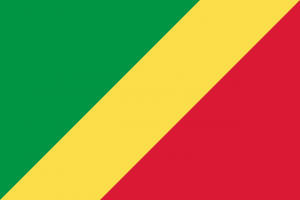Language/Lingala/Grammar/Descriptive-Adjectives
As a Lingala teacher with 20 years of experience, I'm excited to introduce you to the world of descriptive adjectives. Adjectives make our language more vivid and descriptive, allowing us to paint pictures with words. In this lesson, we'll explore how to use descriptive adjectives to describe people, places, and things in Lingala. By the end of this lesson, you'll be able to add color and detail to your conversations in Lingala!
Once you've mastered this lesson, take a look at these related pages: Irregular verbs – kokende – to go & Plurals.
What are Descriptive Adjectives?
Adjectives are words that modify or describe nouns. They give more information about the noun, such as its size, shape, color, and quality. Descriptive adjectives are adjectives that describe or modify the characteristics of nouns. They help us give detailed descriptions of people, places, and things. In Lingala, descriptive adjectives come before the noun they describe.
Let's look at some examples of descriptive adjectives in Lingala:
- Nzela elabami ezo kutani - The long road is winding
- Moto moko mpenza - One big fire
- Mabeli malamu - Beautiful trees
In these examples, the descriptive adjectives are "long," "big," and "beautiful." They all come before the noun they describe and give us more information about the characteristics of the noun.
Types of Descriptive Adjectives
In Lingala, there are two types of descriptive adjectives: qualitative adjectives and relational adjectives.
Qualitative Adjectives
Qualitative adjectives describe the intrinsic qualities or characteristics of a noun. They help us understand what the noun is like or what its nature is. These types of adjectives don't change, regardless of who or what the noun is describing.
Here are some examples of qualitative adjectives in Lingala:
- Nzela elabami ezo kutani - The long road is winding
- Loso ya malambe - The round ball
- Seli ya mikili - The salt is salty
In these examples, the descriptive adjectives are "long," "round," and "salty." They describe the intrinsic qualities of the noun and don't change.
Relational Adjectives
Relational adjectives describe the relationship between two or more nouns. These types of adjectives change depending on the noun they are describing. They help us understand the relationship between the noun being modified and another noun in the same sentence.
Here are some examples of relational adjectives in Lingala:
- Moto na mayele mangi - The tall man
- Mabele ebandi ya mabela - The roof of the house
- Moto na ye mpenza - She is a beautiful woman
In these examples, the descriptive adjectives are "tall," "roof," and "beautiful." They describe the relationship between the modified noun and another noun in the sentence.
How to Use Descriptive Adjectives in Lingala
In Lingala, descriptive adjectives come before the noun they describe. They agree in class and number with the noun they describe. In Lingala, nouns are categorized into different noun classes. The adjective must agree with the class of the noun it's describing.
Let's look at some examples of how to use descriptive adjectives in Lingala:
| Lingala | Pronunciation | English |
|---|---|---|
| moto moko mpenza | moto mɔkɔ mpenza | One beautiful woman |
| asali ya mikili | asali ya mikili | The sweet honey |
| mpiasa misatu malamu | mpiasa misatu malamu | The three good jobs |
In these examples, you can see that the descriptive adjective agrees with the class and number of the noun it's describing. The first example uses "moko," the singular class for "one" and "mpenza" the singular class for "woman," while the second example uses "ya" which agrees with the noun class of "asali" and "mikili." The third example uses "misatu" which is the plural class for "three" and "mpiasa," the plural class for "job."
Irregular Adjectives and Exceptions
While most adjectives in Lingala follow predictable patterns, there are a few exceptions.
Some Lingala adjectives don't change regardless of whether the noun they describe is singular or plural. These adjectives include:
- mobali - male
- mabele - roof
- mayele - height
Let's look at some examples:
- mobali malamu - A good man
- bazali malamu - Good men
In these examples, the adjective "malamu" doesn't change depending on whether it's describing a singular or plural noun. This is an exception to the rule that adjectives need to agree with the noun they're describing.
Conclusion
In this lesson, we explored descriptive adjectives in Lingala, learned how to use them to describe people, places, and things, and saw some examples of how they work in sentences. Descriptive adjectives make our language more vivid and descriptive, and they're a crucial component of any language. By understanding how descriptive adjectives work in Lingala, you'll be able to paint vivid pictures with your words and communicate more effectively. Keep practicing and exploring the world of Lingala – you're on your way to becoming a fluent speaker!
With this lesson finished, you may want to explore these additional pages: Comparative and Superlative & 0 to A1 Course.
Other Lessons
- Wh Questions
- Subject Pronouns
- The first 10 words
- Forming Imperatives
- Object Pronouns
- 0 to A1 Course
- Subject pronouns
- Irregular verbs – koya – to come
- Adjectives
- The Past Tense To Be
Sources

